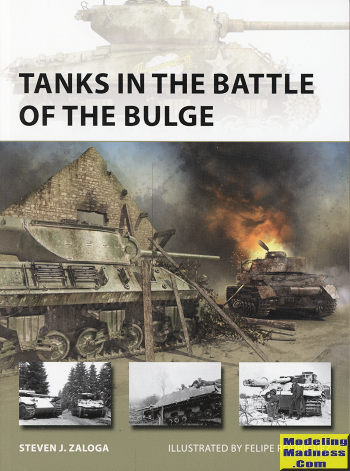 With
the war going very badly for Germany in late 1944, a plan was developed to try
to do something about the Allied advance towards Germany. The best way to stifle
that advance, was to cut off supplies. In this case, it meant taking over the
port of Antwerp, where the majority of Allied supplies were unloaded. However,
this plan required several specific events to happen.
With
the war going very badly for Germany in late 1944, a plan was developed to try
to do something about the Allied advance towards Germany. The best way to stifle
that advance, was to cut off supplies. In this case, it meant taking over the
port of Antwerp, where the majority of Allied supplies were unloaded. However,
this plan required several specific events to happen.
One was fairly poor weather to keep Allied fighter-bombers grounded. The
Luftwaffe was completely unable to gain any sort of air superiority by this time
so the foul weather was necessary. Secondly, a level of surprise was needed that
involved attacking through an area that was unexpected, and that was the
Ardennes. Third, there had to be a way to misdirect any reinforcements and that
was where the use of fake US troops and armor camouflaged to look like US
vehicles came into play. It was also imperative that the attack keep to a
specific timetable for it all to work.
What became to be known as the Battle of the Bulge was only partially
successful but eventually failed in its goals due to the inability to keep to
the time table and the breaking of the bad weather which allowed Allied airpower
to roam the battlefield.
Another aspect was the operation of armor. Though the Germans attacked a
fairly weak portion of the front lines, they also attacked troops who were
fairly experienced by this time. Despite the technical superiority of German
armor, the Germans lacked experienced crews and they lacked numbers. Though
German tanks fought fairly well, the American tanks fought even better with
tactics that overcame the German technical superiority.
This book looks at the variety of weapons used during the battle on both
sides. It looks at the plans of both the Germans and American forces and the
author points out areas of strength and weakness in both the plans and the
equipment. Enhanced by great period photos, well done charts and art work as
well as some nice profiles, we get to see how all this equipment operated during
this period of time. Their strengths and weaknesses are discussed as well,
making for a well rounded volume. A great read for the enthusiast and well worth
picking up.
March 2020
Copyright ModelingMadness.com. All rights reserved.
For more on the complete line of Osprey books,
visit www.ospreypublishing.com.
If you would like your product reviewed fairly and
fairly quickly, please
contact
the editor or see other details in the
Note to
Contributors.
 With
the war going very badly for Germany in late 1944, a plan was developed to try
to do something about the Allied advance towards Germany. The best way to stifle
that advance, was to cut off supplies. In this case, it meant taking over the
port of Antwerp, where the majority of Allied supplies were unloaded. However,
this plan required several specific events to happen.
With
the war going very badly for Germany in late 1944, a plan was developed to try
to do something about the Allied advance towards Germany. The best way to stifle
that advance, was to cut off supplies. In this case, it meant taking over the
port of Antwerp, where the majority of Allied supplies were unloaded. However,
this plan required several specific events to happen.